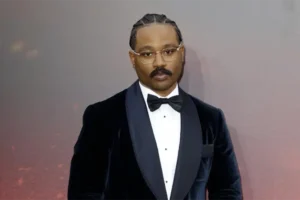With a healthy helping of Chicago house music and classic 1970s disco, the New York Times called Renaissance a “tour of some of the genre’s most well-known touchstones as well as more underground sounds.”
By Stacy M. Brown
NNPA Newswire Senior National Correspondent
@StacyBrownMedia
Beyoncé’s new album, “Renaissance,” has taken the world by storm as expected.
With a healthy helping of Chicago house music and classic 1970s disco, the New York Times called Renaissance a “tour of some of the genre’s most well-known touchstones as well as more underground sounds.”
“It is consciously steeped in dance-music history, cannily embracing decades of samples and sounds: the 1970s disco of Donna Summer and Chic, Jamaican dancehall, internet-speed hyper pop,” Michaelangelo Matos penned for the Times.
“She chose collaborators, references, and even specific keyboard sounds that pay homage to club-land memories while making her own 21st-century statement,” Matos wrote. The new tracks include songs like “Cozy,” “Cuff It,” “Energy,” and “Break My Soul.” The album immediately soared to the top of Apple Music in 100 countries.
Sixteen of the top 21 songs on Apple Music are from Renaissance, and the debut enjoyed more than 43 million streams on Spotify — a new record. “For at least the past decade, Beyoncé Giselle Knowles-Carter has been the world’s greatest living entertainer,” Rolling Stone wrote.
“Beyoncé really made this album for the club,” journalist Vincent Desmond tweeted. “No matter how much you love ‘Renaissance,’ you are going to love this at least five times more if you hear the album or any of its songs in the club. It goes so crazy.”
As noted by Pitchfork, Renaissance was announced as “Act I” of an upcoming saga, and the album’s liner notes confirmed that Beyoncé would follow it up with at least two more “acts.”
“She has said that all the music was made during a creative burst at the peak of COVID and that it was inspired by her children, her husband, and her team,” Journalist Dylan Green wrote.
“But what could these multiple parts entail? One theory: The music is the driving force behind Renaissance more than a specific narrative arc; if Act I is a culmination of various forms of Black music and their effects on pop across the 20th and early 21st centuries, it’s possible that Act II and Act III might look at the way it moves in the present and forward into the future.”
Green continued:
“Beyoncé has accomplished a lot over her nearly 30-year career, but a full-blown musical trilogy is new even for her. Like every piece of art that bears her name, the anticipation is half the fun.”









